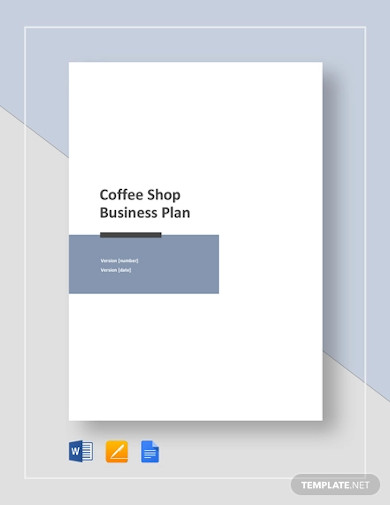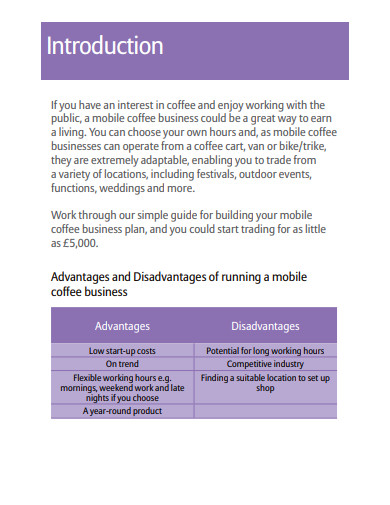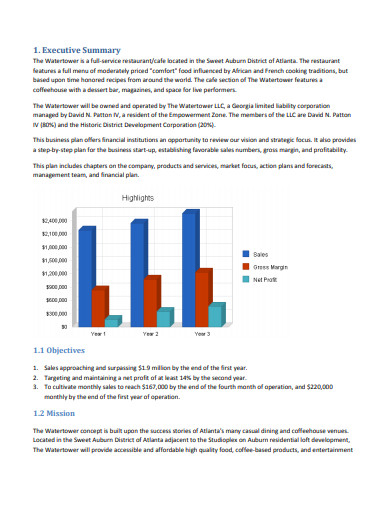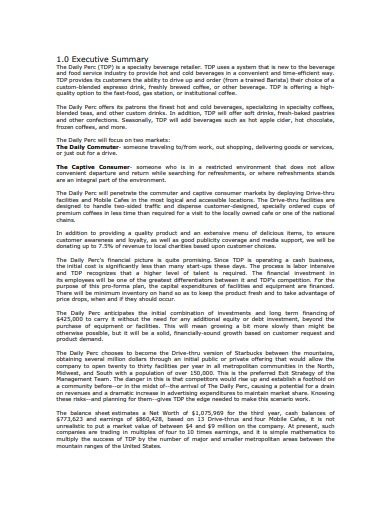6+ Coffee Shop Business Plan Examples to Download
According to Statista, Americans consumed 26.5 million 60-kilogram coffee bags from 2018 to 2019. More than half of the US citizens relish the joy of good caffeine on a daily basis, which makes coffee shops a prominent deal in the country. This also makes a viable business venture. However, the question lies in whether or not you’ll make it as a coffee shop owner. Strategize your success with a reliable coffee shop business plan. This allows you to establish a formidable startup cafe through rigorous research and a thorough understanding of your objectives. Learn more about this in the article below.
6+ Coffee Shop Business Plan Examples
1. Coffee Shop Business Plan

2. Coffee Shop Business Plan
3. Sample Coffee Shop Business Plan
4. Coffee Shop Business Plan Example
5. Coffee House Business Plan
6. Coffee Shop Business Project Plan
7. Printable Coffee Shop Business Plan
What Is a Coffee Shop Business Plan?
A coffee shop business plan presents a comprehensive description of an entrepreneur’s cafe idea and plans to establish its operation. It provides a detailed account of the business sales and marketing ideas, competition evaluation reports, financial projections, and the nature of its services. On some occasions, a consulting business plan is presented by the owner to a prospective partner or investor in hopes of a sponsorship.
Why Have a Business Plan?
If you’re a startup in the cafe business, would you like to direct your focus first towards completing a load of paper works and research a.k.a your business plan? For most small-time business owners, it’s about getting things done head-on and directly setting up a small establishment, getting all the products in place, and waiting for the customers to start trickling in. Sometimes, it turns out well, but without a concrete sales and marketing business plan in place, it could result in the worst.
So, why have a business plan?
A business plan keeps everything organized. It helps you determine every detail of your business matters and helps you set up a process that will cater to them. This way, you won’t miss out on any requirements. This also helps you thrive in a competitive market because this demands you to look into your target market and the rest of your competition. Because a business plan requires you to oversee a financial analysis, this reduces the risk of you losing your funds because this helps you allocate your finances properly.
How to Make a Coffee Shop Business Plan
The coffee shop industry in the United States amounted to $47.5 billion in 2019. This is a 3.3% increase from its rate in the previous year, which costs $45.4 billion. The coffee shop industry is steadily growing, with over 35,000 shops nationwide. Jumping into this massive and lucrative market will prove to be a struggle, especially when there are giant brands already in place. The only thing you can rely on to set you up to succeed has a well-prepared business plan. If you’re still learning how to do so, you might find the following guidelines helpful:
1. Commence with a Goal
There is never a plan without an objective. Your goals will serve as your plan’s pathway towards its success. Knowing where you want your business to end up will provide you with cues on how you’ll be able to make it happen. Start your plan by establishing a business goal-setting. Ask yourself how you want to see your coffee shop grow in a few years. To ensure that you’re treading on the right goals, make them SMART: specific, measurable, actionable, realistic, and timely. These criteria will help you craft an action plan that you can execute on a timeline.
2. Study Your Target Market and Competition
In any business venture across all industries, two points of view can greatly affect the way you do your business: your target market and your competition’s standard. These matters take a huge spot on your business plan, so be sure to work on them during the process. Observe your competitor’s strategy and identify their strengths and weaknesses. Then, assess your own through a SWOT analysis and compare how you’ll be able to top their performance in the field. As for your target market, it’s always best to employ a market analysis to understand what affects their purchasing behaviors and what strategies and trends rank best on their preferences.
3. Map a Marketing Strategy
Your marketing strategy is the result of your competition and market research plan. This will tell you how you’ll sell your product’s best and how you will introduce your establishment to the market. This is where your advertising plans and special promotions belong. If you’ve been in the business for decades and would want to upgrade into a more modern coffee shop image, this plan would undoubtedly be discussed under your marketing plan’s strategy.
4. Have a Financial Plan in Place
Now that you’ve studied deep into your marketing and sales, as well as your business objectives, it’s time to settle your financial plan. Your business plan’s financial aspect should help you decide how your funds will be circulated to meet the needs of the business. This will include resources, lease payments, maintenance fees, and daily operational expenses. This will also include your projected profit increase and the details of your cash flow. If you got a bank loan to fund your entrepreneurial venture, your debt should take a significant place in the equation. This helps you plan money matters so you can efficiently manage them while you run the business.
5. Prepare Your Executive Summary Last
A business plan’s executive summary is on the first part of the document, as this will showcase a comprehensive review of your entire plan’s content. By order of succession, an executive summary should be taken care of first, but this could be impractical. You’ll fail at adding all relevant information on your summary without first completing the rest of the parts. Be sure to make your summary appealing because it will be the first thing your audience will see. This will be your plan’s hook if you opt to gather the attention of prospective partners and investors.
FAQs
What are the different types of business plans?
The different types of business plans are:
- Startup Business Plan
- Traditional Business Plan
- Strategic Business Plan
- Growth Business Plan
- Feasibility Business Plan
- Operation Business Plan
What are the different parts of a business plan?
A business plan has seven essential parts. They are as follows:
- Executive summary
- Business synopsis
- Product and service description
- Marketing analysis
- Sales and marketing strategy
- Organization and operation
- Financial plan
What are the characteristics of a good business plan?
According to Chron, a good business plan has:
- Ample significant information on financial matters
- Clear identification of the business’ industry
- Inclusion of the operational and management features
- Information on how the business’ sales and marketing will function
With coffee being almost everyone’s morning energizer, go-to first date order, and late-night companion, it comes with no surprise that coffee shops and their ultra-relaxing ambiance are a huge hit. If you aspire to start your own neighborhood coffee shop, success shouldn’t be a daydream you play in your head over and over again; act on your objectives. Have a reliable coffee shop business plan to back you up. You won’t need to bother starting from scratch because our business plan template collection is here for you. Download now!








